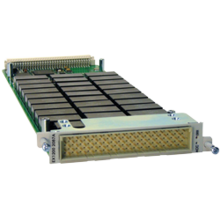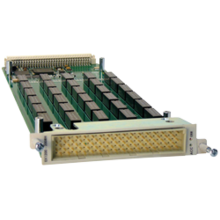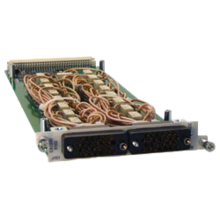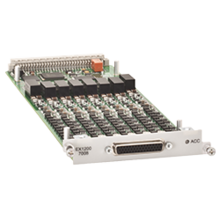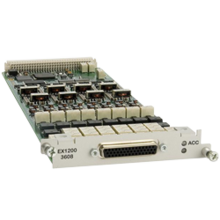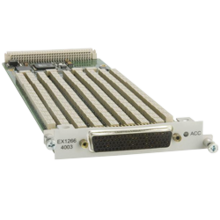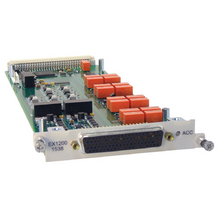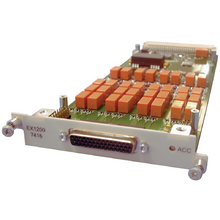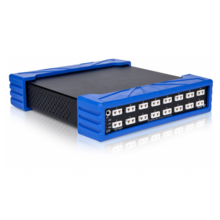Products
Displaying 733 - 744 of 790
The LXI mainframes family includes 2-slot, half-rack LXI switching and data acquisition mainframes (EX1202/EX1262), 16-slot, 3U LXI switching and data acquisition mainframes (EX1208A and EX1208B, pictured), and 6-slot, 1U LXI switching and data acquisition mainframes (EX1206A).
Multiplexer switch modules up to 1000VDC in a 1, 2 or 4 wire configurations.
Power switching up to 16A and high voltage mux cards
Ideal for UUT loading or simulation
Wide resistance range from 0.5 Ω to 1.5 MΩ
0.1 Ω step size
Over-voltage, over-current, and over-temperature sensing protects unit under test
External voltage and current sense for monitoring built-in
RF/Coax switching modules up to 26 GHz for high frequency and communication switching needs
Eight channel, universal, 2-/4-wire RTD simulator
Fast, monotonic, glitch-free resistance value programming
Suitable for simulating resistors, platinum/copper/nickel RTDs
Suitable for pulsed and continuous excitation inputs
Direct temperature value programming
Extensive triggering capability
Synchronize level changes with input measurements to facilitate test sequencing
Signal Generations, Arbitrary Waveform generation and Digital to Analog output modules for providing signal simulation capability
High density switch matrix models in 1 wire and 2 wire configurations
8 frequency counter channels, 16 isolated digital I/O channels, 2 isolated DAC channels in a single card
Single frequency measurement range that works from 0.05 Hz to 1 MHz
Very stable TCXO base clock, 50 MHz ±1 ppm
195 kΩ Input impedance with selectable coupling (AC/DC)
Wide differential input voltage range (±48 V) with up to 250 V working common mode voltage
Programmable threshold and hysteresis levels with 1 mV resolution
Support for quadrature encoder
Isolated DIO channels with up to 60 V compliance
Isolated and independent 16-bit DAC channels, configurable for voltage or current output
Up to 96 differential channels per full rack mainframe
Constantly monitor input signals for fault conditions
Flexible configurations for detecting edges, out-of-bounds conditions and measuring pulse widths
Inputs can be masked, inverted, and combined to produce interrupts
Can be used as a time stamp module and as a digital I/O
Programmable debounce circuitry prevents erroneous readings
10 V and 100 V input ranges
On-board memory stores events with IEEE 1588 timestamps
Synchronize reading of input states with other scanned analog channels
Eight ports of 8 I/O bits each
High current capability for control of external relays, 300 mA sink
Simulate and receive digital data at up to 2 MHz sample rates
Selectable output voltages range from 3.3 V to 60 V
Setup outputs and scan inputs as part of EX1200 measurement sequencing engine
Typical accuracies of ±0.20°C
16-channel isolated universal thermocouple/voltage inputs
Power over Ethernet+ (PoE+)
20K samples/second/channel sample rate
24-bit ADC per channel
500 V channel-ground isolation
1000 V channel-channel isolation
Data logger acquisition mode
Built-in parallel data streaming
Full-featured embedded web interface
LXI Ethernet interface
8-bit bank isolated digital I/O
Compact 1U half-rack form factor

